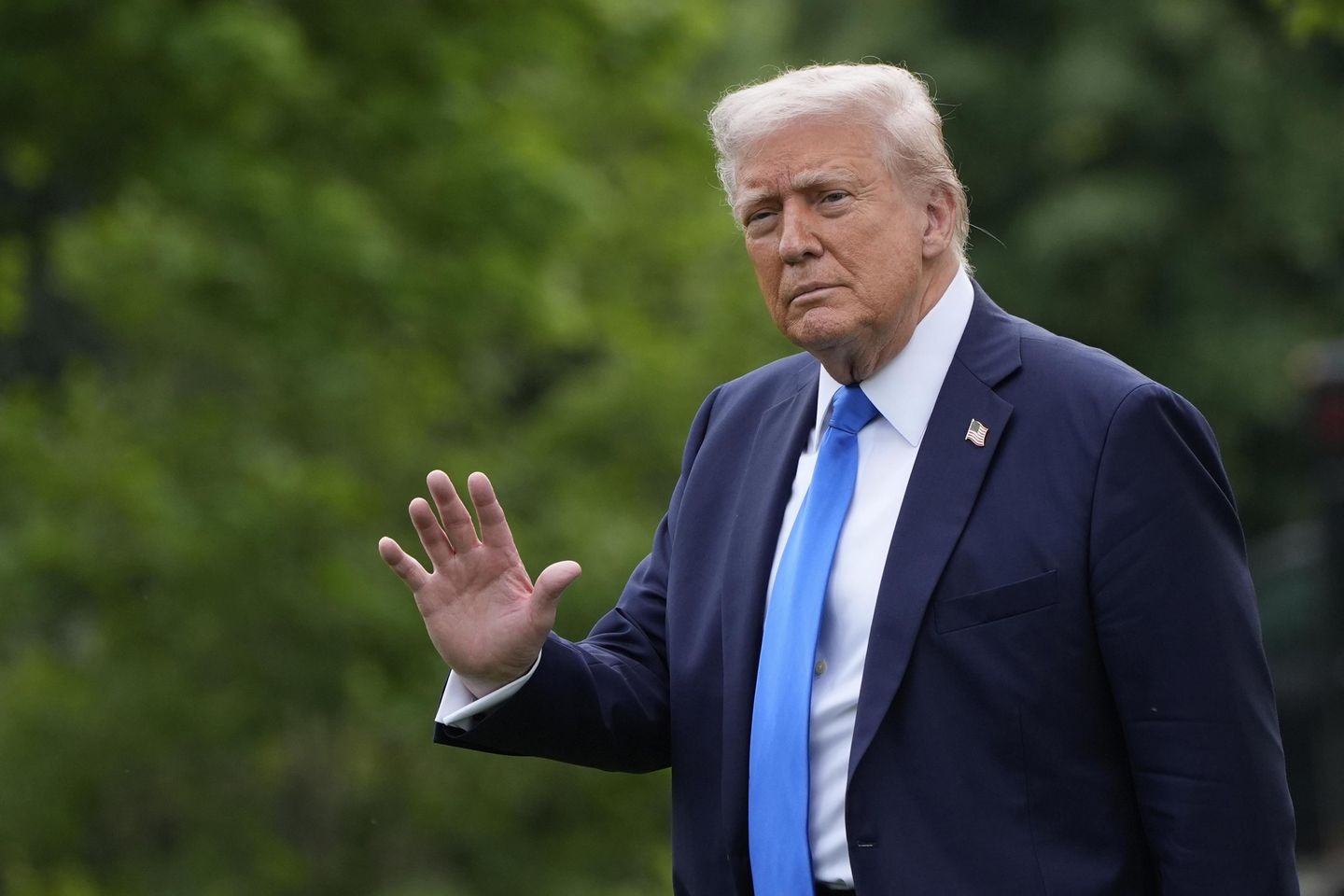
President Trump is asking for eye-popping cuts of $163 billion in federal spending in his fiscal 2026 budget proposal, but senior Senate Republicans quickly raised objections that the blueprint also would cut defense spending.
The budget proposal, released Friday, calls for one of the largest budget-cut requests by a president in modern U.S. history. It seeks steep cuts to hundreds of programs at federal agencies, which the administration has blasted as promoting “woke” gender and racial ideologies that it says “poisons the minds of Americans.
The administration also has proposed what it says is a record $1 trillion increase in defense spending for next year, or a 13% increase. It further calls for $175 billion in new spending to secure the U.S. border. Under current spending levels, the U.S. doles out $892.3 billion on national security.
But Senate Republicans immediately slammed the proposal, accusing the White House of fudging numbers, arguing that most of that defense spending increase doesn’t go to the Pentagon or military, but to initiatives outside the Defense Department’s purview such as the Energy Department’s work on nuclear weapons or the Homeland Security’s efforts to bolster border enforcement.
The Pentagon-only request is for $961 billion in spending, compared to the $876.8 billion passed in January for the current fiscal year under the Biden administration.
“OMB is not requesting a trillion-dollar budget. It is requesting a budget of $892 billion, which is a cut in real terms. This budget would decrease President Trump’s military options and his negotiating leverage,” said Sen. Roger Wicker, Mississippi Republican and chair of the Senate Armed Services Committee.
Sen. Mitch McConnell, Kentucky Republican and chairman of the Appropriations subcommittee on Defense, said Mr. Trump’s budget doubles down “on the Biden administration’s material neglect for the glaring national security threats.”
Speaking with reporters, Office of Management and Budget Director Russell Vought insisted the budget request is for a “very, very healthy” 13% increase in defense.
“We want to make sure that it is going towards capabilities that DOD needs, says it wants, says are vital. And we are changing the way that this place works and we’re happy to continue to explain that to the HIll. And I’m not surprised that we’ll have some work to do on that front,” he said.
The proposal will fund the Golden Dome missile defense project, shipbuilding, modernizing other U.S. nuclear weapon systems, as well as a 3.8% pay raise for the military. Administration officials said it is one of the largest requests for an increase in defense spending since the Reagan administration.
On the non-defense side, among the agencies that could see deep cuts are the Environmental Protection Agency, the Energy Department, the Interior Department, the Department of Housing and Urban Development, the National Institutes of Health, and the National Oceanic and Atmospheric Administration.
For example, Mr. Trump has proposed nearly $40 billion in cuts to the State Department, saying the programs on the chopping block do not align with the administration’s priorities. There is a proposed $18 billion reduction for the National Institutes of Health compared to fiscal year 2025 levels, an $8 billion cut for the Labor Department and a $25 billion reduction for the Department of Housing and Urban Development.
All told, Mr. Trump proposed $557 billion in non-defense spending. That would amount to a 22% reduction in discretionary spending, compared to the federal government’s current spending levels. The total federal budget has risen to roughly $7 trillion annually, with deficits approaching $2 trillion.
Non-defense discretionary spending represents the portion of the federal money that must be reauthorized each year and includes funding for areas such as education, transportation and public health. It does not include Medicare, Medicaid and Social Security.
In a letter to Congress accompanying the budget blueprint, Mr. Vought said the proposed cuts are the result of a “rigorous, line-by-line review” of fiscal year 2025 spending. The fiscal 2026 budget year begins Oct. 1.
Mr. Vought wrote that the current budget is “laden with the spending contrary to the needs of ordinary working Americans and tilted toward funding the niche non-governmental organizations and institutions of higher education committed to radical genders and climate ideologies antithetical to the American way of life.”
Speaking with reporters Friday, Mr. Vought said funding for homeland security, veterans, seniors, law enforcement and infrastructure would still be protected.
Presidential budget requests are typically considered an administration’s wish list laying out top line funding requests, but aren’t as comprehensive as a full budget. Mr. Trump will send the budget outline to Capitol Hill, where both parties are expected to fight over his requests.
House Speaker Mike Johnson, Louisiana Republican, hailed Mr. Trump’s budget request, saying the president proposes cuts in the right places.
“Our country cannot continue to bear the hard consequences of years of runaway spending under Democratic leadership and this budget makes clear that fiscal discipline is non-negotiable. President Trump’s plan ensures every federal taxpayer dollar spent is used to serve the American people, not a bloated bureaucracy or partisan pet projects,” he said.
Sen. Patty Murray of Washington, top Democrat on the Senate Appropriations Committee, said Mr. Trump “wants to outright defund programs that help working Americans while he shovels massive tax breaks at billionaires like himself and raises taxes on middle-class Americans with his reckless tariffs.”
“This preliminary budget proposal is exceptionally light on details we desperately need—but this much is clear: Trump wants to eviscerate programs that matter most to working families,” she said.
Mr. Trump had indicated earlier this year that the spending increase on defense would come from savings realized through cuts made by the Department of Government Efficiency, the administration’s cost-savings advisory agency. Since its creation in January, DOGE — led by billionaire Elon Musk — has dismantled federal agencies, slashed programs and fired government workers.

















